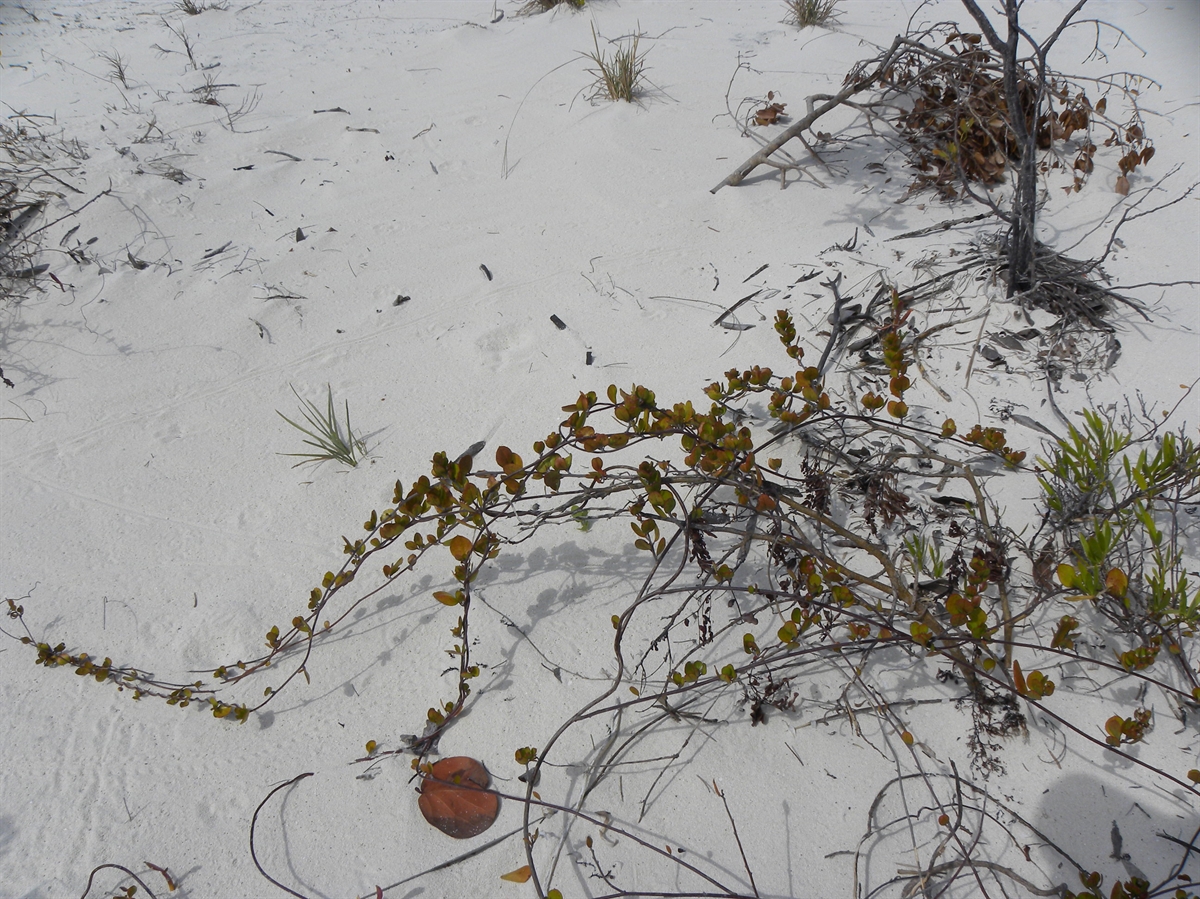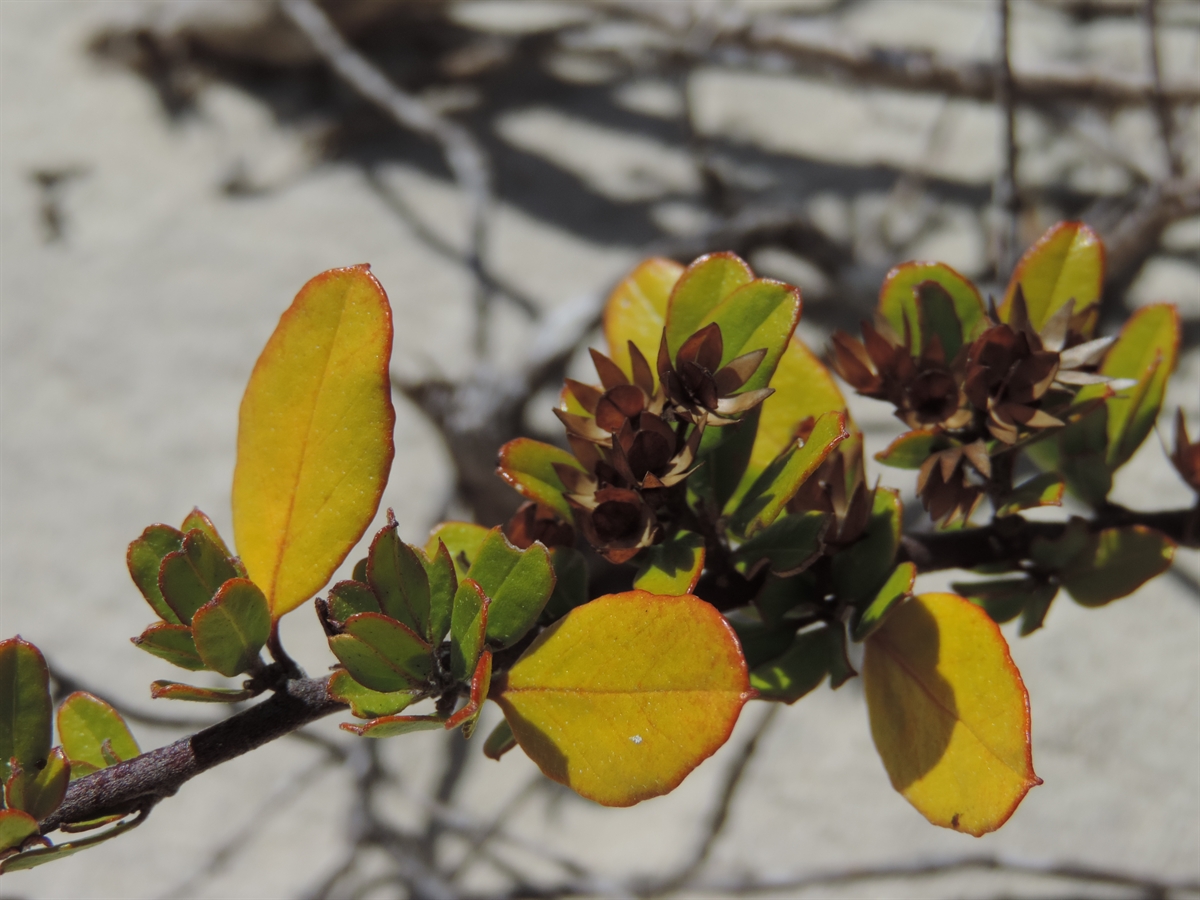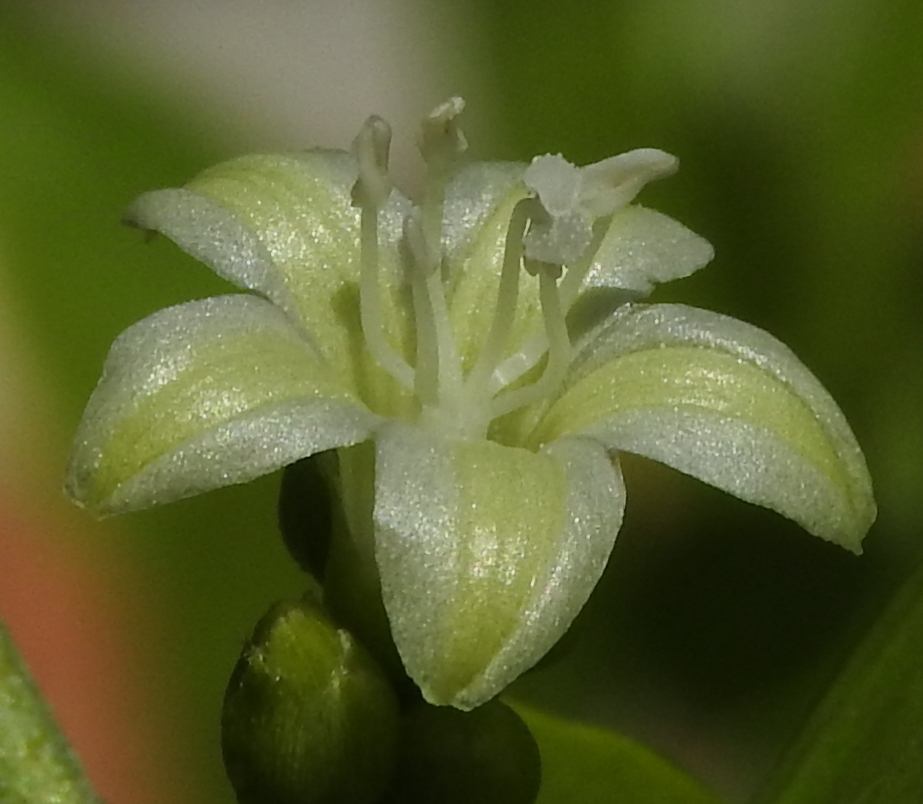Habit: Jacquemontia cayensis grows as a vine becoming woody with age. The leaves are arranged alternately, to 5 cm in length, and ovate to orbicular. The leaf margin is entire with an acute or retuse leaf apex. Vegetative material maybe glabrous or pubescent.
The complete, perfect, actinomorphic flowers are arranged in cymes, axillary clusters or are solitary. The calyx has 5 unfused, greenish sepals whose edges slightly overlap. The corolla has 5 fused, white with pale green petals with elongate lobes. There are 5 stamens fused to the base of the corolla tube. The superior ovary has 2 locules and numerous seeds. The fruit is a brown capsule at maturity. The seeds are slightly winged.
Habitat: Jacquemontia cayensis grows in coastal sandy soils.
Distribution: Jacquemontia cayensis occurs on all island groupings in the Lucayan Archipelago as well as the Greater Antilles.
Medicinal/Cultural/Economic usage: Jacquemontia cayensis is not used medicinally in the Lucayan Archipelago.


